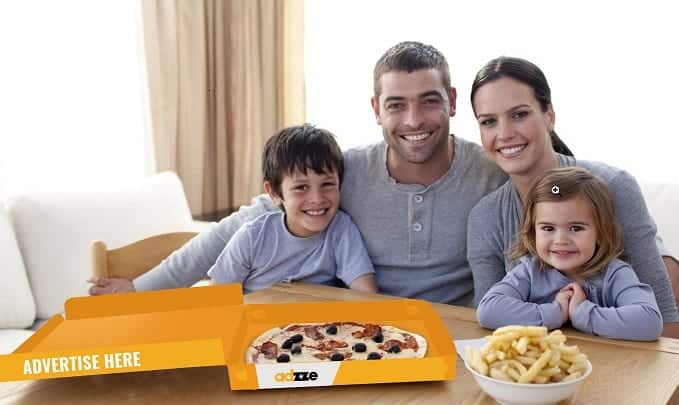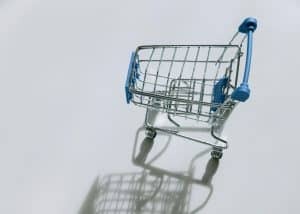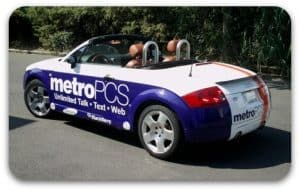In the race to perfect precise target marketing, most brands have turned to digital tools — audience segments, cookies, geo-fencing, AI-driven personalization. But in this quest for online precision, marketers may have overlooked a powerful reality: not all meaningful moments happen on a screen.
In fact, some of the most powerful, trust-building moments in the customer journey happen offline — sipping coffee, waiting at a pharmacy, folding laundry in a laundromat, or sitting quietly at a bar.
This is where tactile advertising becomes the secret weapon of truly precise target marketing — by engaging customers during these overlooked, high-receptivity micro-moments with physical, in-hand media like coffee sleeves, pharmacy bags, and bar coasters.
Let’s explore how brands can go beyond digital segmentation and achieve true audience precision with well-timed, location-smart, sensory-driven tactics.
Why Precise Target Marketing Needs to Leave the Screen
Today’s marketers spend billions on precise target ads via social media, programmatic platforms, and retargeting tools. These campaigns reach specific demos, yes — but they often miss one vital ingredient: emotional context.
Someone may see your digital ad, but are they really engaged, receptive, or primed to convert?
That’s where the idea of micro-moments comes in — small slices of time when consumers are relaxed, reflective, or physically idle. These moments often occur in:
Coffee shops
Pharmacies
Laundromats
Doctor’s offices
Bars or salons
By placing your message directly in-hand — on a coffee sleeve, pizza box, pharmacy bag, or placemat — you’re no longer interrupting. You’re integrating.
And that’s the future of precise target advertising.
What Is Micro-Moment Targeting?
A micro-moment is a short period of consumer focus and intent, often triggered by environment or task. These are real-life windows when consumers are most open to discovery, education, or offers — often without realizing it.
Examples include:
While waiting for a prescription
During their morning coffee ritual
While eating dinner at home
Sitting in a salon chair
Folding laundry in a laundromat
The best time to deliver a precise target ad isn’t when the customer is overwhelmed with online distractions — it’s when they’re physically and emotionally available.
That’s what tactile media delivers.
Tactile Advertising = Precision Through Context
Most blogs on precise target marketing focus on behavioral data, digital personalization, and A/B testing. These are useful — but they miss a crucial dimension: physical and contextual precision.
Let’s compare:
Format |
Targeting Type |
Engagement Level |
Emotional State |
Social Media Ad |
Demographic |
Low |
Distracted |
Programmatic Display |
Behavioral |
Low |
Overloaded |
Tactile Ad (Pharmacy Bag, Coffee Sleeve) |
Location + Timing |
High |
Focused, Receptive |
Tactile ads show up during real-life routines, when the consumer is physically holding the message, and mentally in a space to notice it. It’s precision through presence, not just pixels.
How to Build a Precise Target Marketing Strategy Using Tactile Ads
Here’s how marketers can craft a precise target advertising plan that integrates in-hand media into high-conversion micro-moments:
Identify the Right Micro-Moments for Your Audience
Start by mapping your audience’s day:
Do they visit pharmacies regularly? (Health brands, wellness apps)
Frequent coffee shops before work? (Finance, tech, B2B)
Go out for drinks or dinner? (CPG, alcohol, entertainment)
Use these insights to determine which tactile format (e.g., pharmacy bag, coffee sleeve, bar coaster) offers the highest contextual relevance.
Match Messaging to the Environment
Each location has its own emotional tone:
Pharmacies = trust, responsibility, wellness
Coffee shops = focus, creativity, comfort
Bars = social, relaxed, open
Make sure your precise target ad reflects the vibe. For example:
“Feeling off lately? Free mental health screening nearby.” (Pharmacy bag)
“Big meeting coming up? Calm your nerves with our guided app.” (Coffee sleeve)
“Next round’s on us. Scan for a drink discount.” (Bar coaster)
Use QR Codes for Real-Time Conversion
While tactile media is physical, it bridges seamlessly into digital with QR codes — turning a coffee sleeve into a trackable conversion funnel. You can direct users to:
Booking systems
Discount codes
Product pages
Loyalty programs
This adds measurability to what was once an untrackable medium — giving tactile media a seat at the same performance table as digital ads.
Case Example: A Pharmacy Bag with Precision Impact
Let’s look at a real-world precise target marketing scenario:
Brand: Regional health insurance provider
Audience: Adults 45+ managing chronic conditions
Format: Branded pharmacy bags distributed through 200+ local pharmacies
Message: “Confused about your coverage? We’ll explain it — in plain English.”
CTA: QR code to schedule a 10-minute consult with a local rep
Result:
22% of QR scans converted into consults
8% purchased a new health plan
Campaign ROI: 340%
This wasn’t mass marketing. It was micro-moment mastery — a precise target ad placed directly in a high-trust, high-dwell setting.
Why Tactile Ads Win Attention Where Digital Can’t
Here’s why precise target advertising works better with physical formats than digital-only campaigns:
Challenge |
Digital Ads |
Tactile Ads |
Ad fatigue |
High |
Low |
Trust |
Low-moderate |
High (delivered via credible venues) |
Physical engagement |
None |
Strong (held, used, seen for 15+ mins) |
Emotional alignment |
Often off-mark |
Highly contextual |
Screen overload |
Yes |
No |






